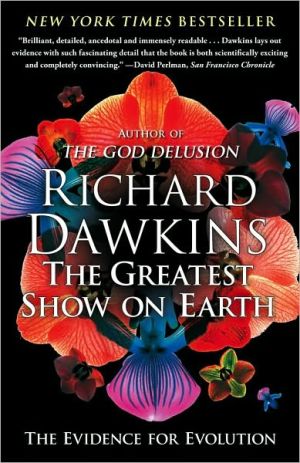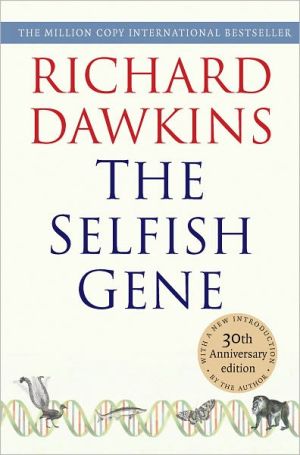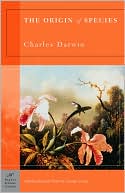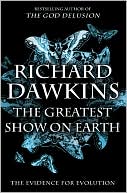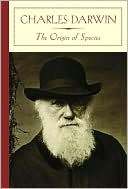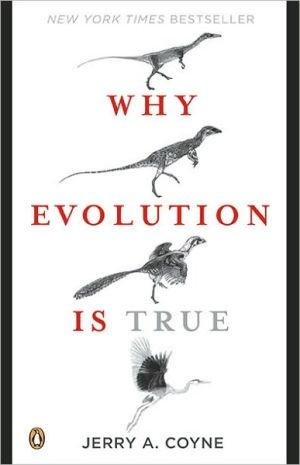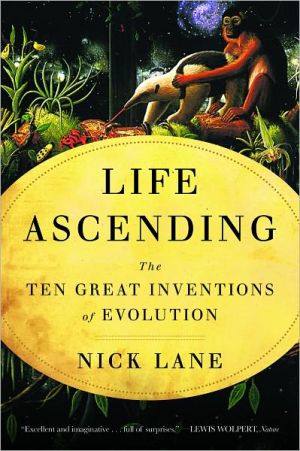Shadows of Forgotten Ancestors: A Search for Who We Are
"Dazzling...A feast. Absorbing and elegantly written, it tells of theorigins of life on earth, describes its variety and charaacter, and culminates in a discussion of human nature and teh complex traces ofhumankind's evolutionary past...It is an amazing story masterfully told."\ FINANCIAL TIMES (LONDON)\ World renowned scientist Carl Sagan and acclaimed author Ann Druyan have written a ROOTS for the human species, a lucid and riveting account of how humans got to be the way we are. It shows...
Search in google:
"Dazzling...A feast. Absorbing and elegantly written, it tells of theorigins of life on earth, describes its variety and charaacter, and culminates in a discussion of human nature and teh complex traces ofhumankind's evolutionary past...It is an amazing story masterfully told."FINANCIAL TIMES (LONDON)World renowned scientist Carl Sagan and acclaimed author Ann Druyan have written a ROOTS for the human species, a lucid and riveting account of how humans got to be the way we are. It shows with humor and drama that many of our key traits—self-awareness, technology, family ties, submission to authority, hatred for those a little different from ourselves, reason, and ethics—are rooted in the deep past, and illuminated by our kinship with other animals. Astonishing in its scope, brilliant in its insights, and an absolutely compelling read, SHADOWS OF FORGOTTEN ANCESTORS is a triumph of popular science. Publishers Weekly In a leisurely, lyrical meditation on the roughly four-million-year span since life dawned on Earth, Sagan and Druyan ( Comet ) argue that territoriality, xenophobia, ethnocentrism, occasional outbreeding and a preference for small, semi-isolated groups are elements in a survival strategy common to many species, including Homo sapiens. Yet society's problems, they assert, increasingly demand global solutions and require a dramatic, strategic shift which the authors optimistically believe humankind is capable of achieving. This engaging, humane odyssey offers a stunning refutation of the behavioristic worldview with its mechanistic notion that animals (except for humans) lack conscious awareness. Writing with awe and a command of their material, the husband-wife team cover well-trod terrain while they discuss the evolution of Earth's atmosphere and life forms, the genetic code, the advantages of sexual reproduction. The last third of the book, dealing with chimpanzees, baboons and apes, is the most interesting. Sagan and Druyan find chimps' social life ``hauntingly familiar'' with its hierarchy, combat, suppression of females and chimps' remarkable ability to communicate through symbols. First serial to Parade. (Oct.)
IntroductionPrologue: The Orphan's File11On Earth as It Is in Heaven92Snowflake Fallen on the Hearth193"What Makest Thou?"334A Gospel of Dirt515Life Is Just a Three-Letter Word736Us and Them977When Fire Was New1198Sex and Death1419What Thin Partitions...15710The Next-to-Last Remedy18111Dominance and Submission20112The Rape of Caenis21913The Ocean of Becoming23914Gangland25715Mortifying Reflections26516Lives of the Apes29317Admonishing the Conqueror31718The Archimedes of the Macaques34119What Is Human?36120The Animal Within38521Shadows of Forgotten Ancestors409Epilogue417Notes421Permissions Acknowledgments479Index481
\ Publishers Weekly - Publisher's Weekly\ In a leisurely, lyrical meditation on the roughly four-million-year span since life dawned on Earth, Sagan and Druyan ( Comet ) argue that territoriality, xenophobia, ethnocentrism, occasional outbreeding and a preference for small, semi-isolated groups are elements in a survival strategy common to many species, including Homo sapiens. Yet society's problems, they assert, increasingly demand global solutions and require a dramatic, strategic shift which the authors optimistically believe humankind is capable of achieving. This engaging, humane odyssey offers a stunning refutation of the behavioristic worldview with its mechanistic notion that animals (except for humans) lack conscious awareness. Writing with awe and a command of their material, the husband-wife team cover well-trod terrain while they discuss the evolution of Earth's atmosphere and life forms, the genetic code, the advantages of sexual reproduction. The last third of the book, dealing with chimpanzees, baboons and apes, is the most interesting. Sagan and Druyan find chimps' social life ``hauntingly familiar'' with its hierarchy, combat, suppression of females and chimps' remarkable ability to communicate through symbols. First serial to Parade. (Oct.)\ \ \ \ \ Library JournalAstronomer Sagan is probably the biggest name in popular science writing, a fact that should assure that his latest book--written with his wife, Druyan--will find a wide audience. Sagan's goal is to explain how luck and natural selection combined to produce human beings after three and a half billion years of life on earth. Human behavior, he stresses, results more from similarities with our animal ancestors than from any unique qualities we may possess. Sagan flounders a bit early on in his effort to explain molecular evolution, but he picks up speed later when the focus shifts to primate behavior. Despite a preference for the overly dramatic phrase at the expense of scientific clarity, the argument is coherent throughout. While this is hardly one of the best books on human evolution, it will likely be very popular, especially in public libraries. Previewed in Prepub Alert, LJ 6/1/92.-- Eric Hinsdale, Trinity Univ. Lib., San Antonio\ \ \ Kirkus ReviewsA BIG book about BIG questions—"Who are we? Where do we come from? Why are we this way and not some other? What does it mean to be human?"—with all the Sagan/Druyan trademarks: crystal-clear scientific exposition, a dash of pseudotheology, and lots of big numbers. Sagan and wife Druyan begin with a standard recital of the origins of sun, planets, and life on earth, but soon move on to their central theme: the triumph of evolutionary theory and the truths unveiled through study of our animal kin. An enjoyable brief life of Darwin sets the tone: enraptured regard for scientific orthodoxy, couched in lucid prose with playful asides (an imagined Hollywood version of the classic Wilberforce-Huxley debates on the origin of species). When the authors turn to the role of DNA in speciation, those big numbers start cropping up: "ten trillion or so cells of your body"; "perhaps a billion AGCT nucleotide pairs." And so does the amateur theology, in which Sagan and Druyan plump hard for deism, the notion of a God who created the universe and then absconded. Things rocket forward when the authors focus on the gaudy canvas of sexuality, consciousness, language, and so on in the animal kingdom. A barrage of eye-popping anecdotes leaves the impression that animal social life is a perpetual power play, with dominant males on top and submissive females on the bottom. Many parallels are drawn with humans—e.g., teenage boys playing "chicken" to establish a pecking order. Since the authors contend that no sharp line divides animals and humans, this leads to troubling conclusions about human nature. But Sagan and Druyan think we can overcome our animalistic impulses, althoughthey never quite explain how: The "shadows of forgotten ancestors" weigh heavily on us all. Too long and preachy, but, still, crack science-writing for the masses, and the Sagan name will vault it onto the charts.\ \

